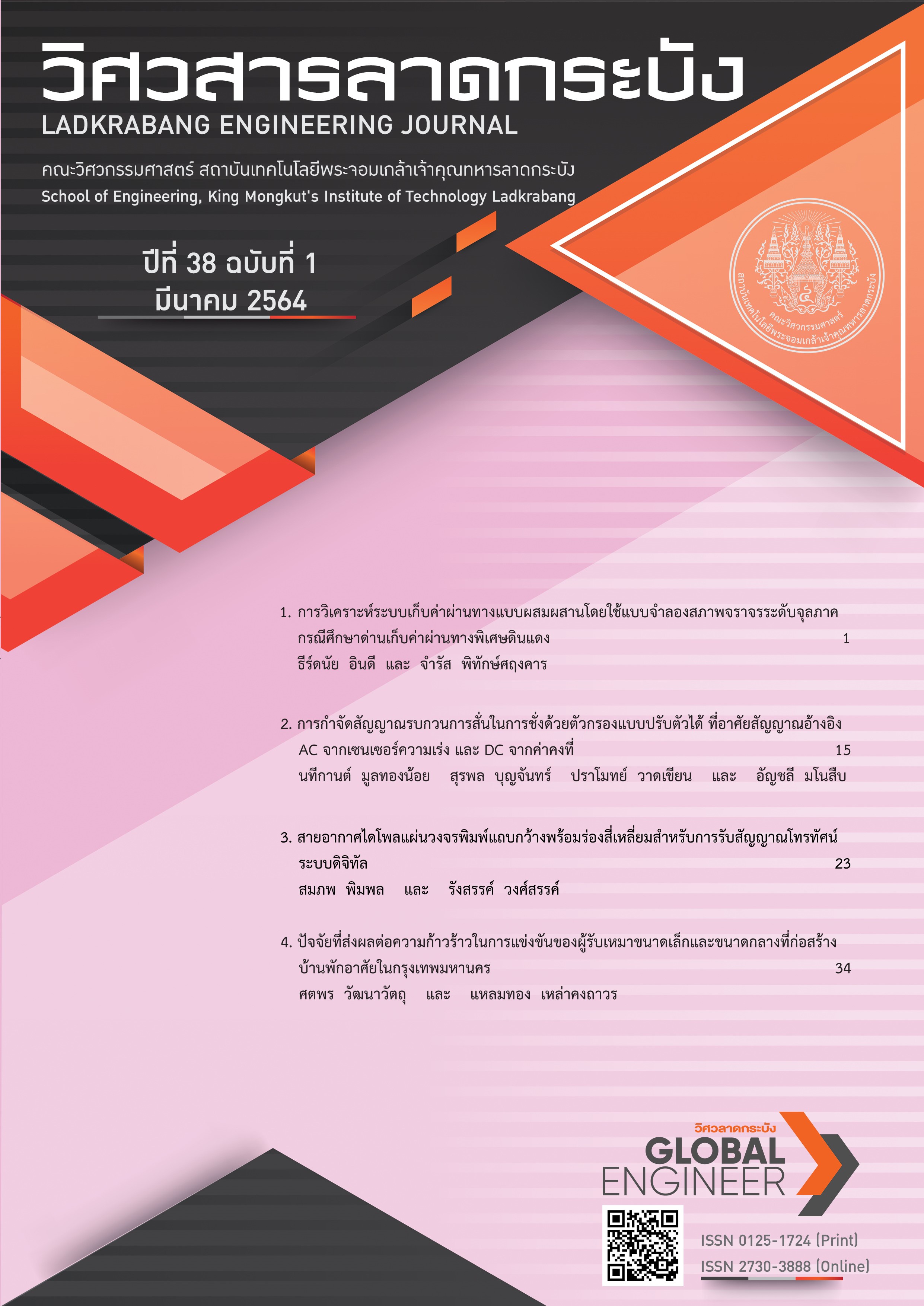Vibration Noise Cancellation of Weighing with Adaptive Filter Base on Reference Signal AC from Accelerometer and DC with Constant
Keywords:
Weighting, Vibration, Adaptive Filter, AccelerometerAbstract
The weighing system is a crucial part of the process in many activities. Some activities demand high accuracy, which is a real environment that cannot be controlled. We found that the strain gauge for weighing is interfered with external vibration, for example, a truck drives through the weighing system with a turned-on engine. Our research presents the use of the LMS algorithm of the adaptive filter and accelerometer. DC constant was used as a reference for the adaptive filter to eliminate vibratory noise and for the true weight assessment. Therefore, the weighing system we propose can improve the accuracy and requires less time and computing resources.
References
R. Zhang, W. Lv and Y. Guo, “A Vehicle Weigh-In-Motion System Based on Hopfield Neural Network Adaptive filter,” Conference on Communications and Mobile Computing, pp.123-127, 2015.
Dhanesh and L. Mathew, “Design of an Adaptive LMS Second Order Volterra Series Filter for Removing Noise from Vibration Signal of Faulty Bearing,” Communication and Information, pp.1-5, 2017.
Q.M. Yang and J.M. Sun, “Study on vibration control based on adaptive filtering algorithm,” Mechatronics and Automation, pp.4018-4022, 2009.
A. Rafique and S.S. Ahmed, “Performance Analysis of a Series of Adaptive Filters in Non-Stationary Environment for Noise Cancelling Setup,” World Academy of Science, Engineering and Technology, No.74, p.332, 2013.
M. Sambur, “Adaptive noise canceling for speech signals,” Transactions on Acoustics Speech and Signal Processing, Vol.26, pp.419-423, 1978.
B. Widrow, S.D. Stearns and J.C. Burgess, “Adaptive signal processing edited by bernard widrow and samuel d.stearns,” The Journal of the Acoustical Society of America, 1986.
W. Hernández, “Improving the response of a wheel speed sensor using an adaptive line enhancer,” Measurement, Vol.33, pp.229-240, 2003.
J.D. Wu and S.L. Lin, “Audio Quality Improvement of Vehicular Hands-Free Communication Using Variable Step-Size Affine-Projection Algorithm,” International Journal of Wavelets Multiresolution and Information Processing, Vol.8, pp.875-894, 2010.
C. Chandrakar and M.K. Kowar, “Denoising ECG signals using adaptive filter algorithm,” International Journal of Soft Computing and Engineering, Vol.2, pp.120-123, 2012.
Downloads
Published
How to Cite
Issue
Section
License
Copyright (c) 2021 Faculty of Engineering, King Mongkut’s Institute of Technology Ladkrabang

This work is licensed under a Creative Commons Attribution-NonCommercial-NoDerivatives 4.0 International License.
The published articles are copyrighted by the School of Engineering, King Mongkut's Institute of Technology Ladkrabang.
The statements contained in each article in this academic journal are the personal opinions of each author and are not related to King Mongkut's Institute of Technology Ladkrabang and other faculty members in the institute.
Responsibility for all elements of each article belongs to each author; If there are any mistakes, each author is solely responsible for his own articles.






